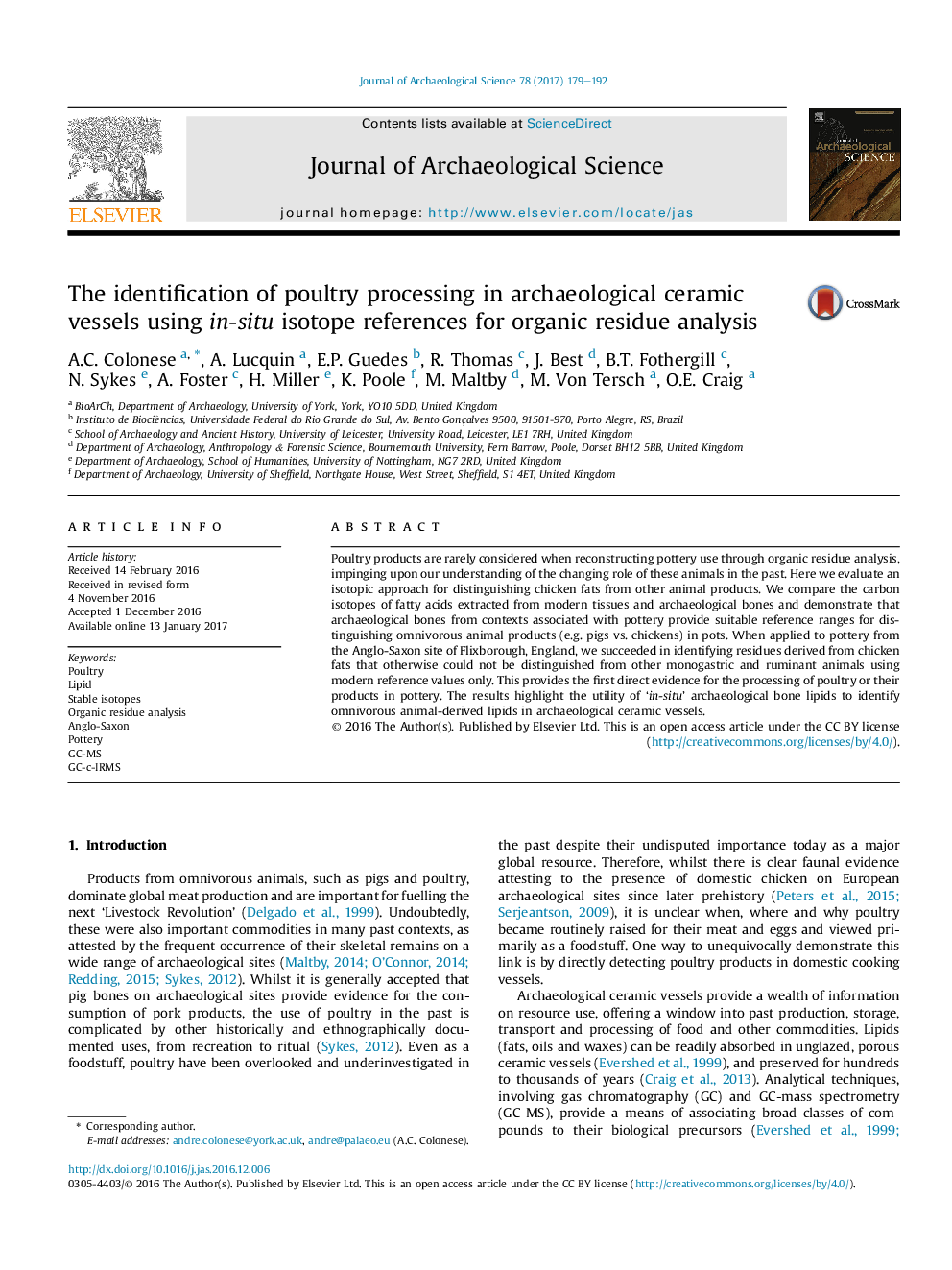| Article ID | Journal | Published Year | Pages | File Type |
|---|---|---|---|---|
| 5112140 | Journal of Archaeological Science | 2017 | 14 Pages |
Abstract
Poultry products are rarely considered when reconstructing pottery use through organic residue analysis, impinging upon our understanding of the changing role of these animals in the past. Here we evaluate an isotopic approach for distinguishing chicken fats from other animal products. We compare the carbon isotopes of fatty acids extracted from modern tissues and archaeological bones and demonstrate that archaeological bones from contexts associated with pottery provide suitable reference ranges for distinguishing omnivorous animal products (e.g. pigs vs. chickens) in pots. When applied to pottery from the Anglo-Saxon site of Flixborough, England, we succeeded in identifying residues derived from chicken fats that otherwise could not be distinguished from other monogastric and ruminant animals using modern reference values only. This provides the first direct evidence for the processing of poultry or their products in pottery. The results highlight the utility of 'in-situ' archaeological bone lipids to identify omnivorous animal-derived lipids in archaeological ceramic vessels.
Related Topics
Physical Sciences and Engineering
Materials Science
Materials Science (General)
Authors
A.C. Colonese, A. Lucquin, E.P. Guedes, R. Thomas, J. Best, B.T. Fothergill, N. Sykes, A. Foster, H. Miller, K. Poole, M. Maltby, M. Von Tersch, O.E. Craig,
